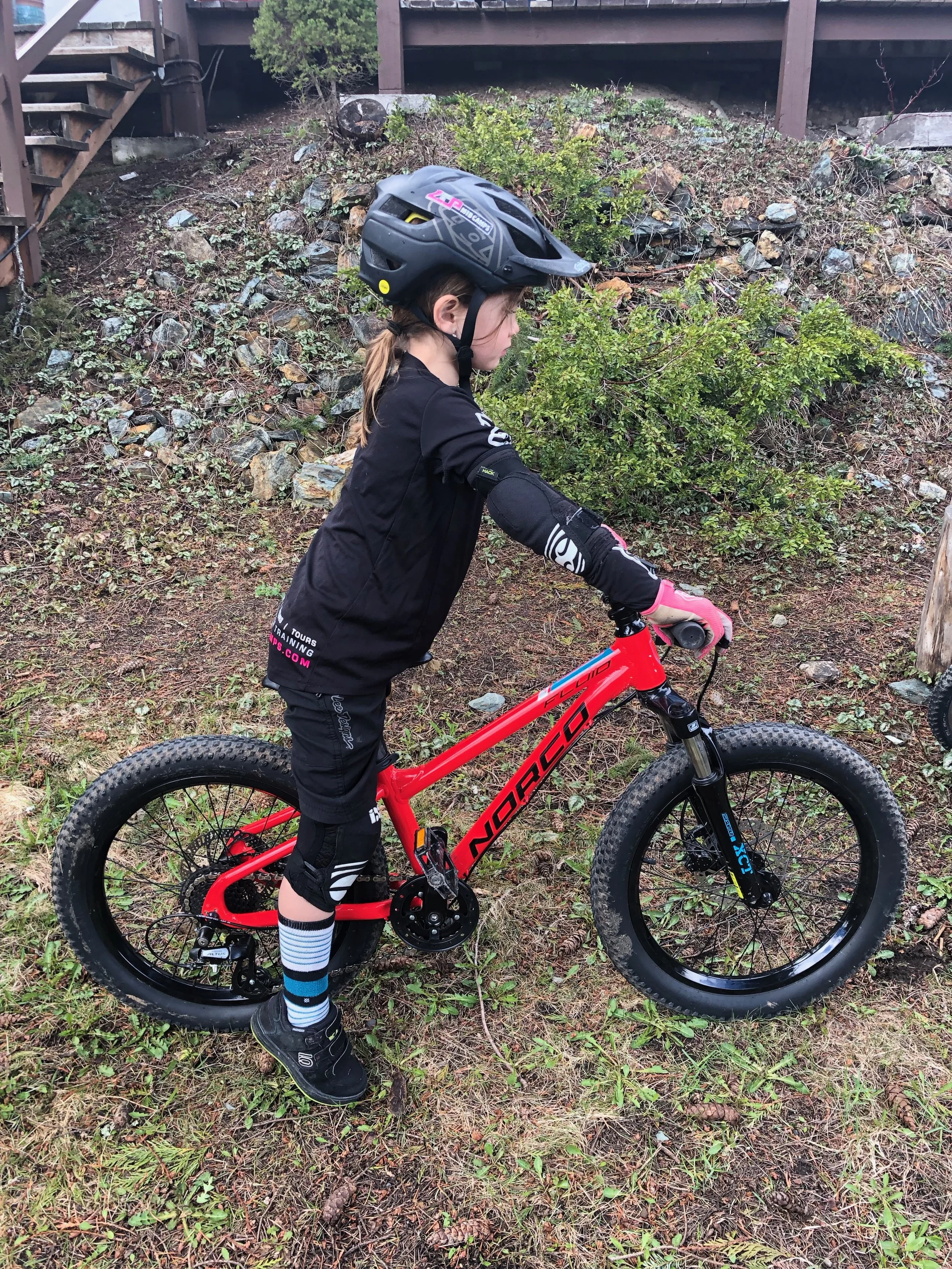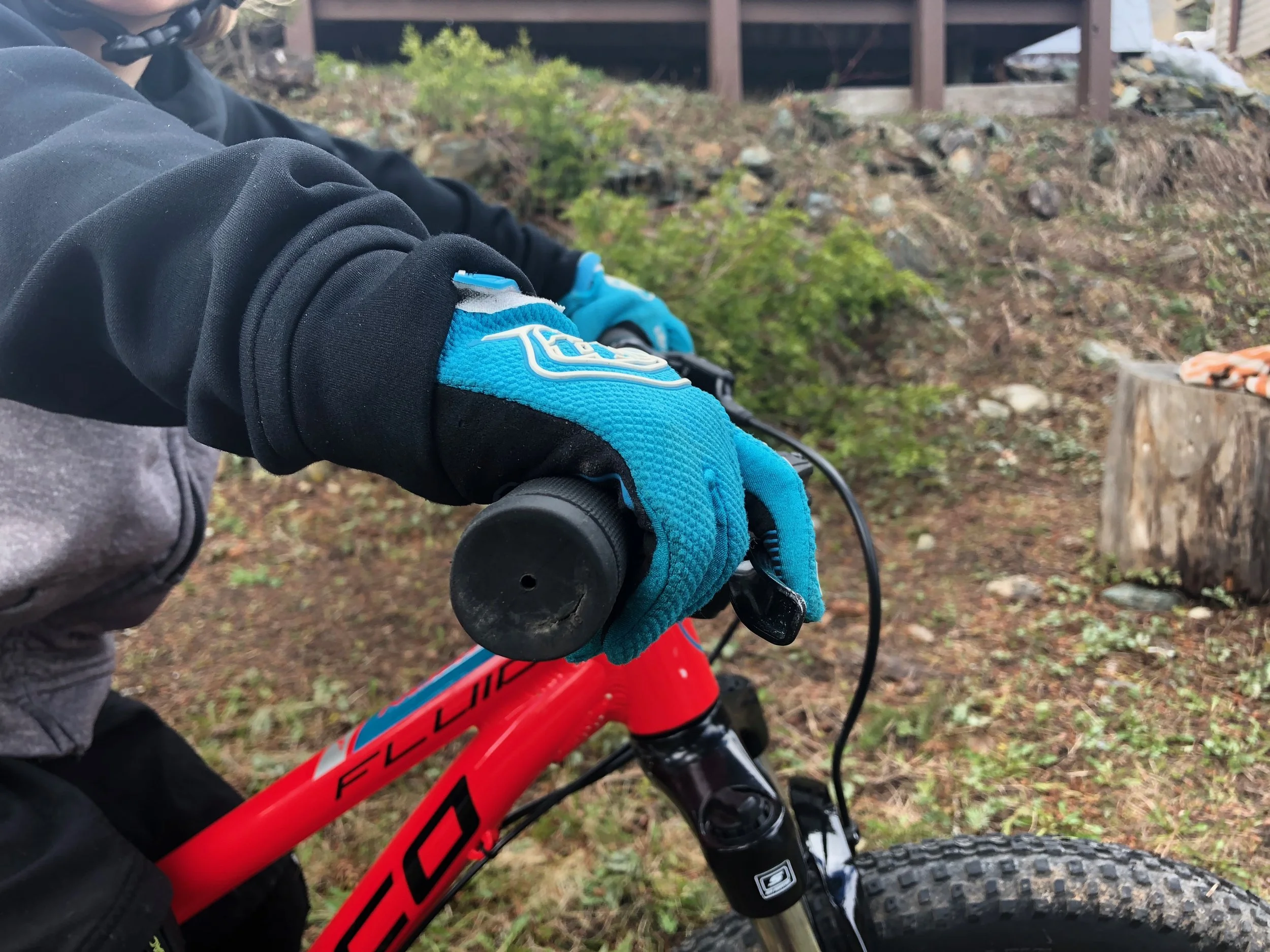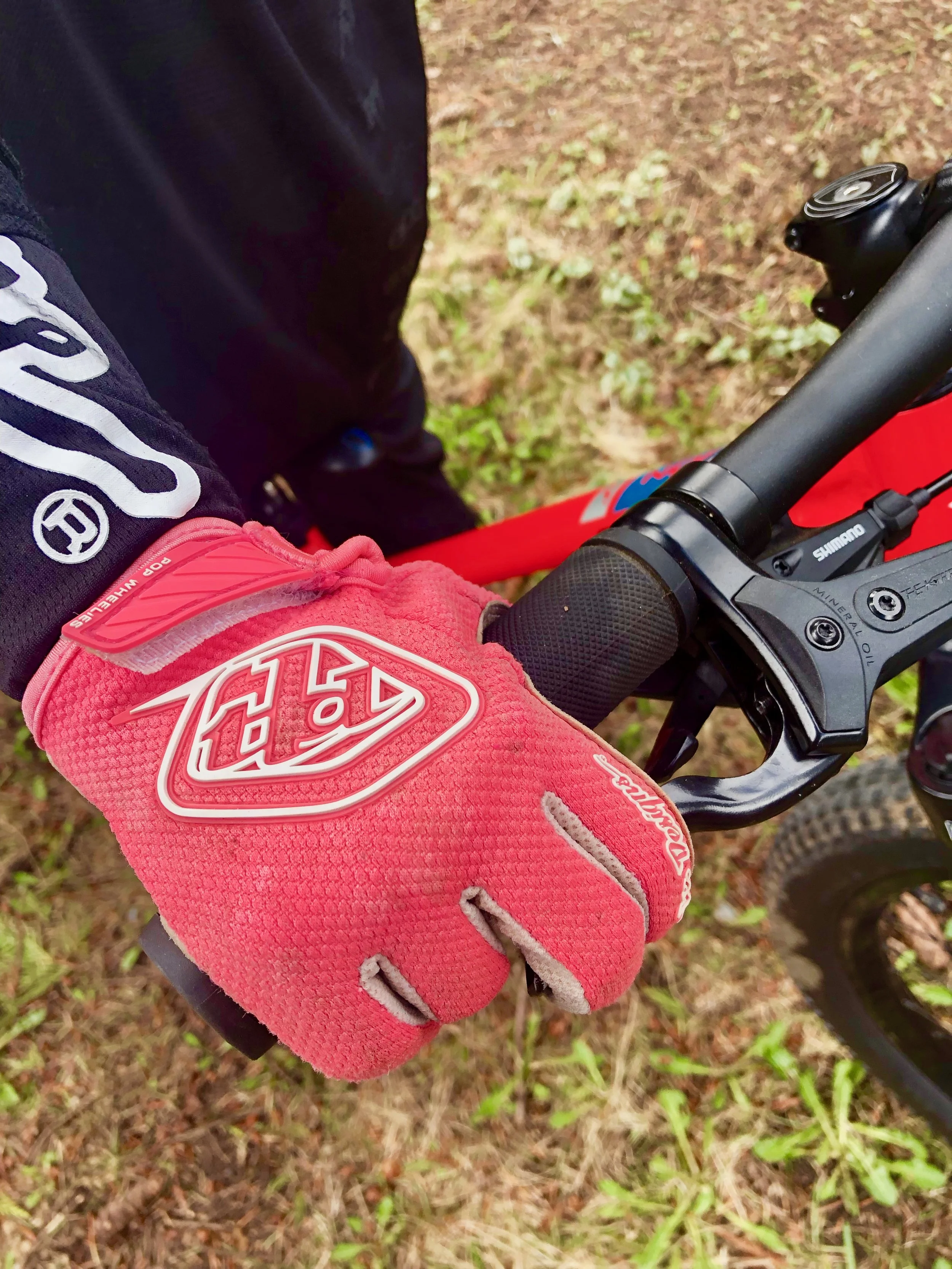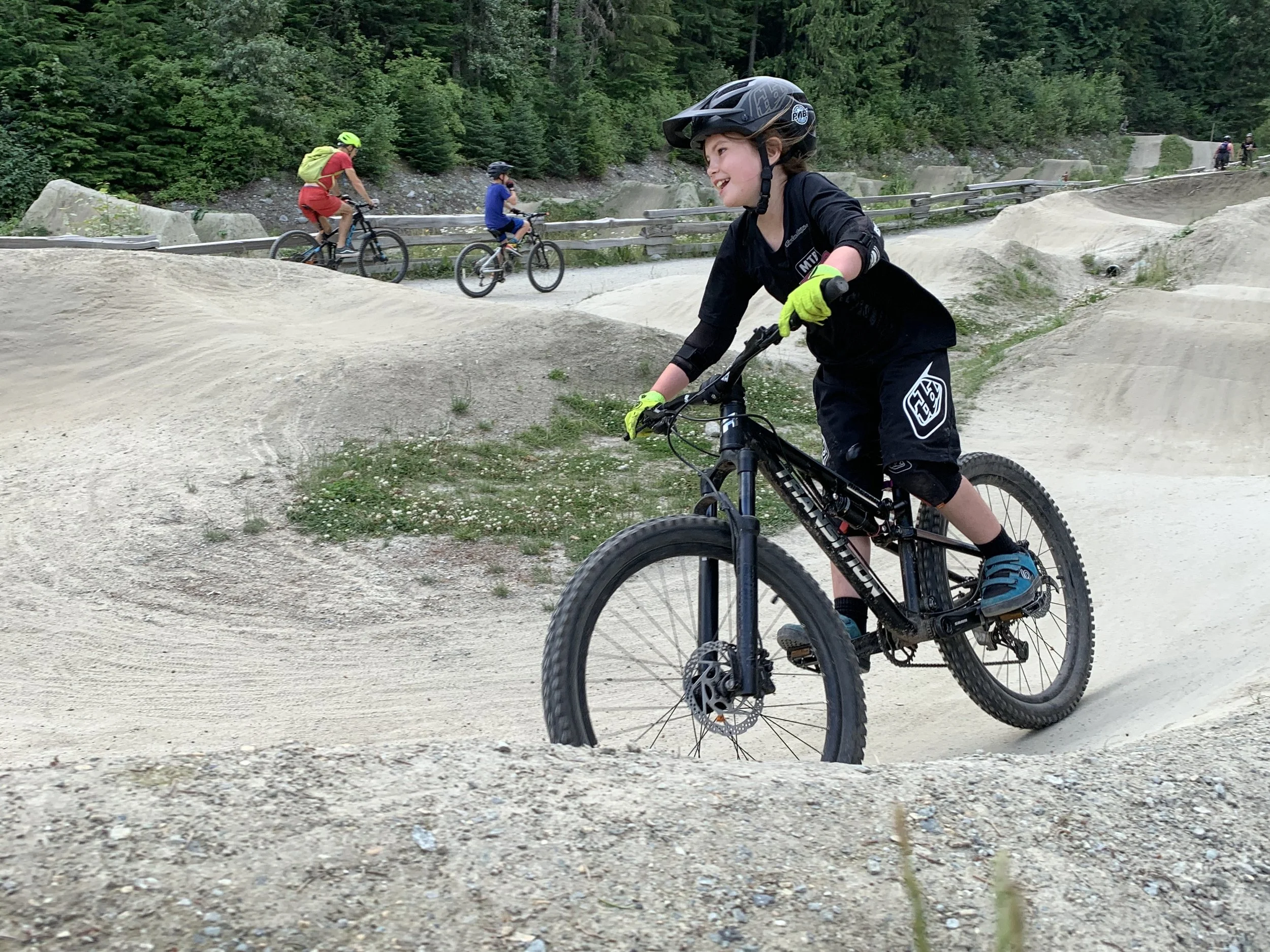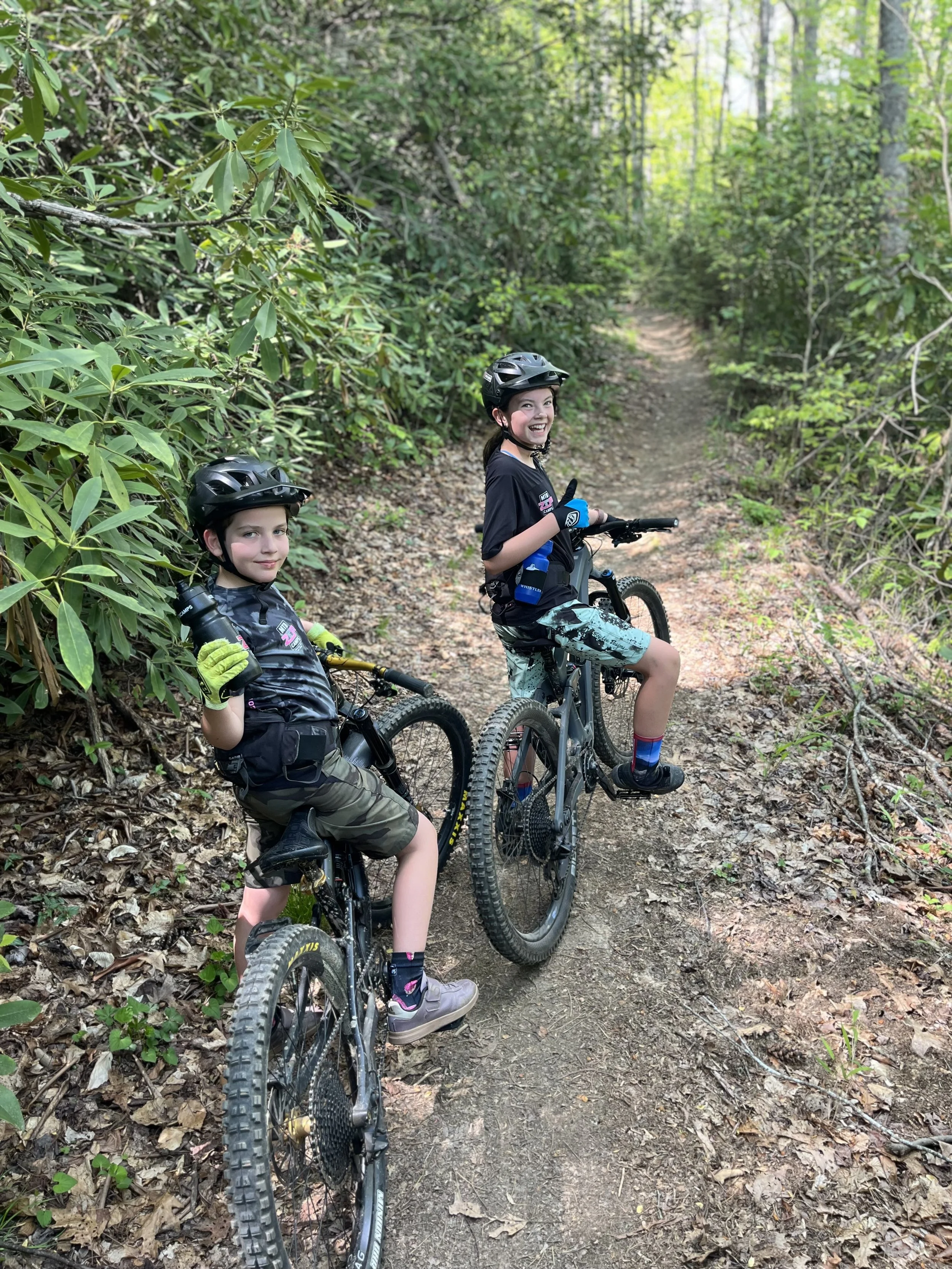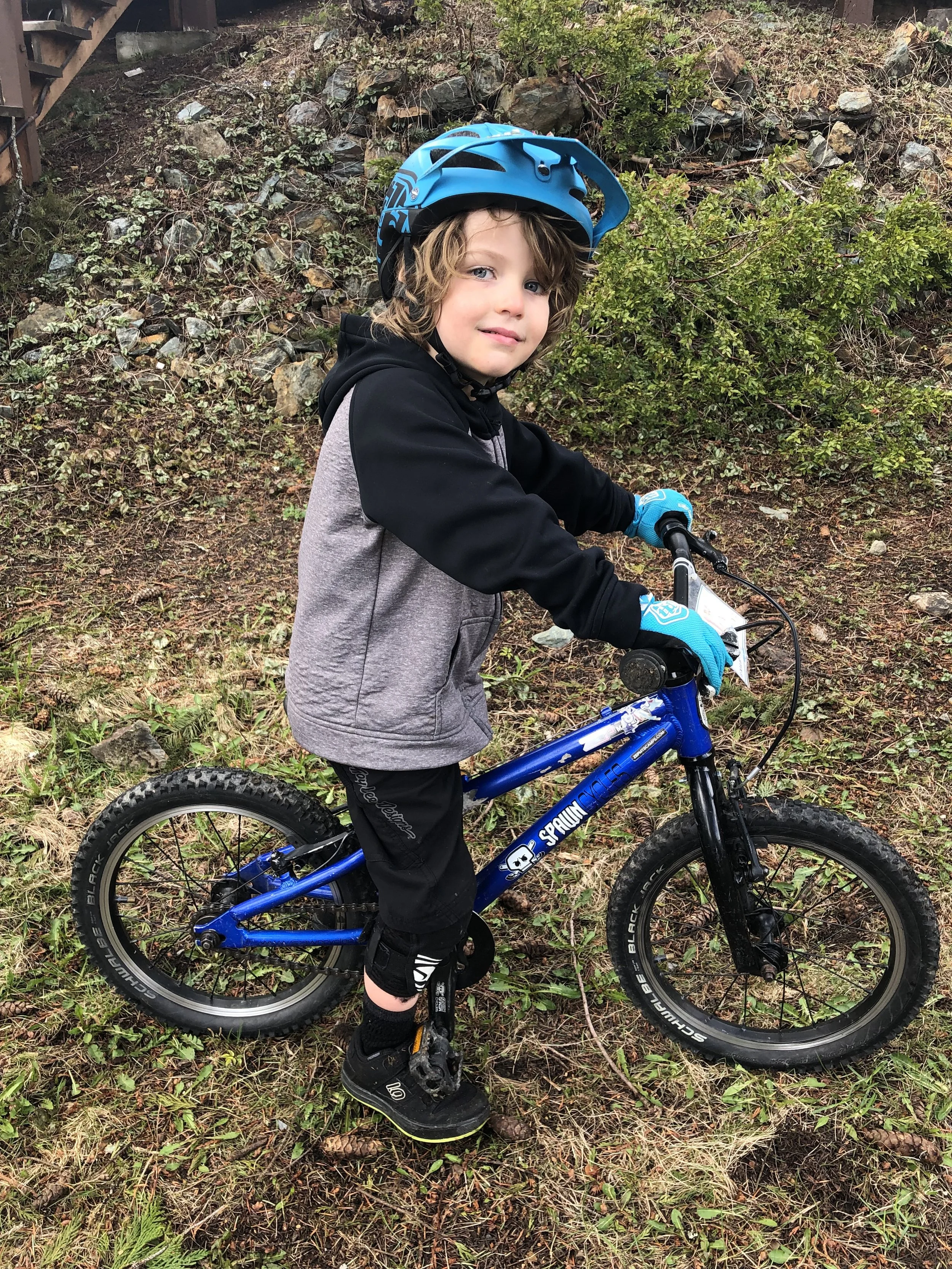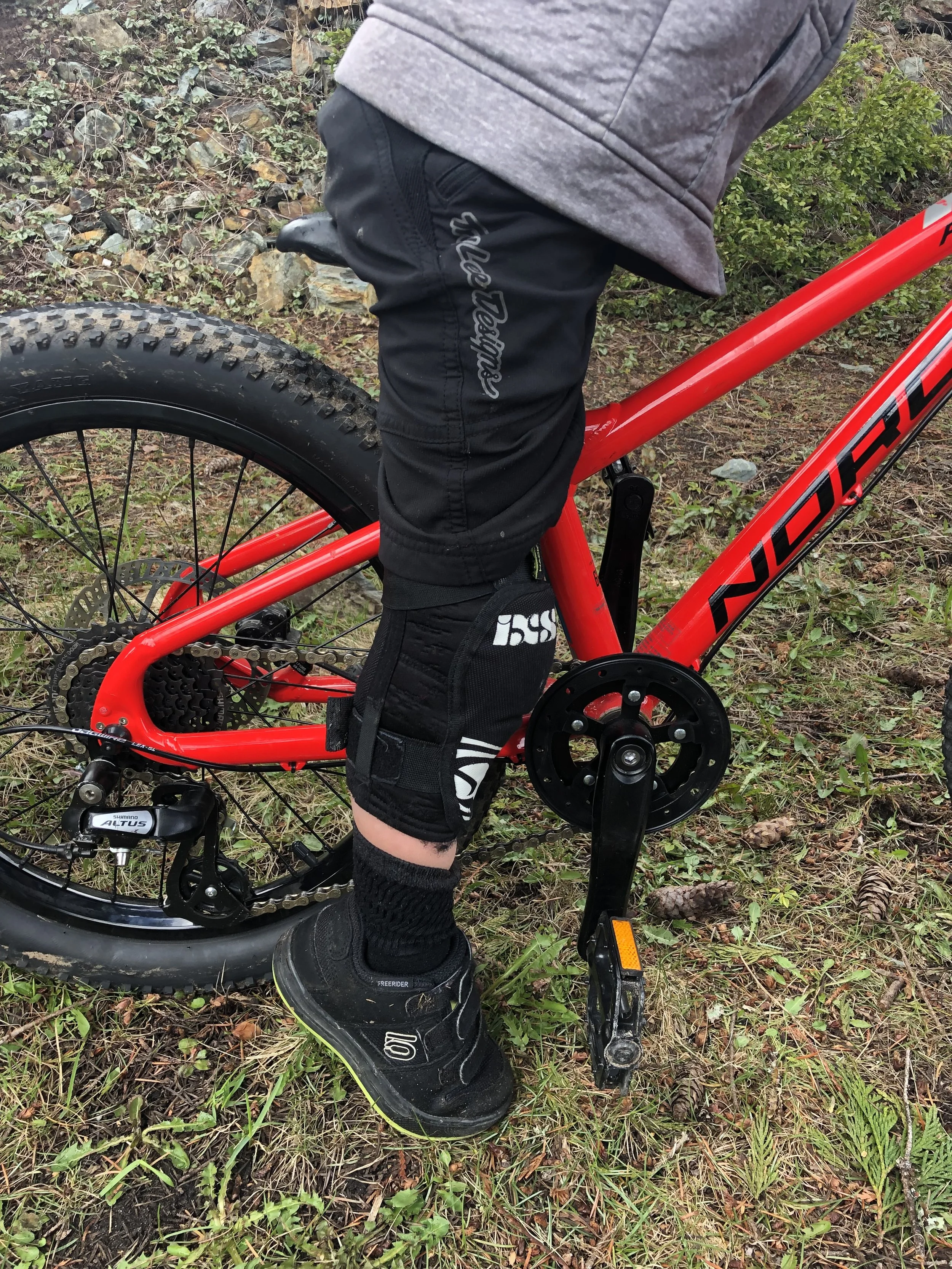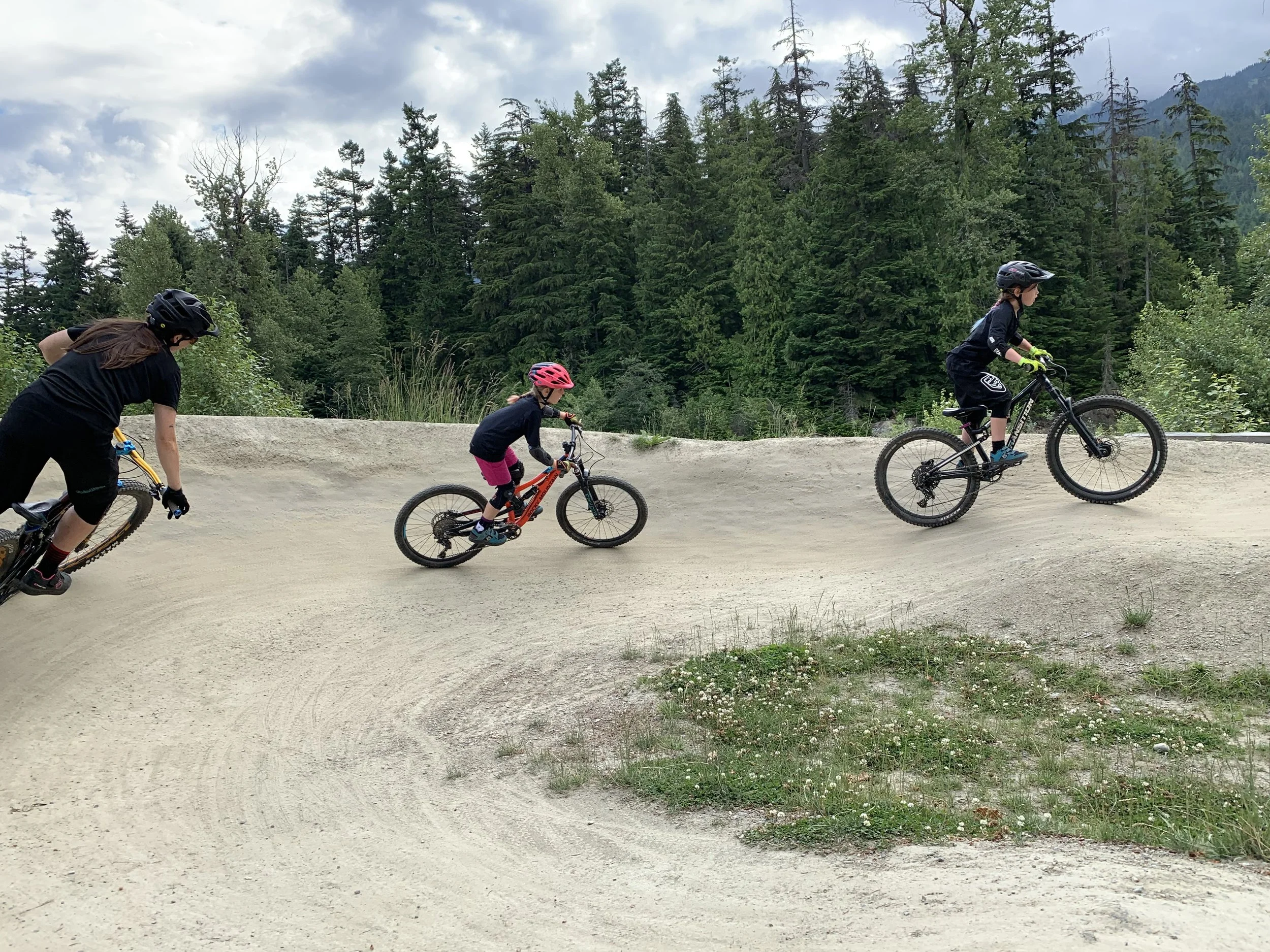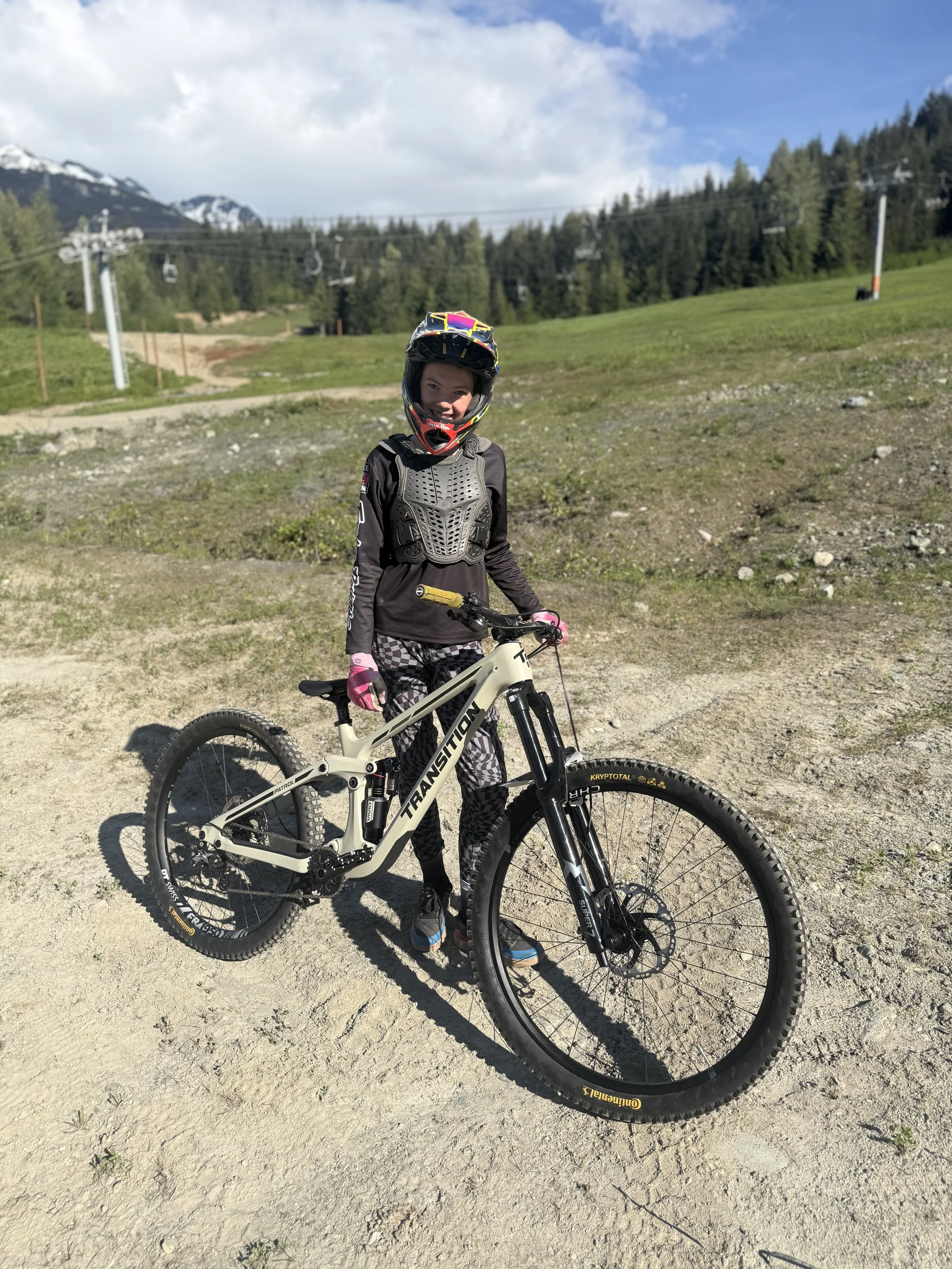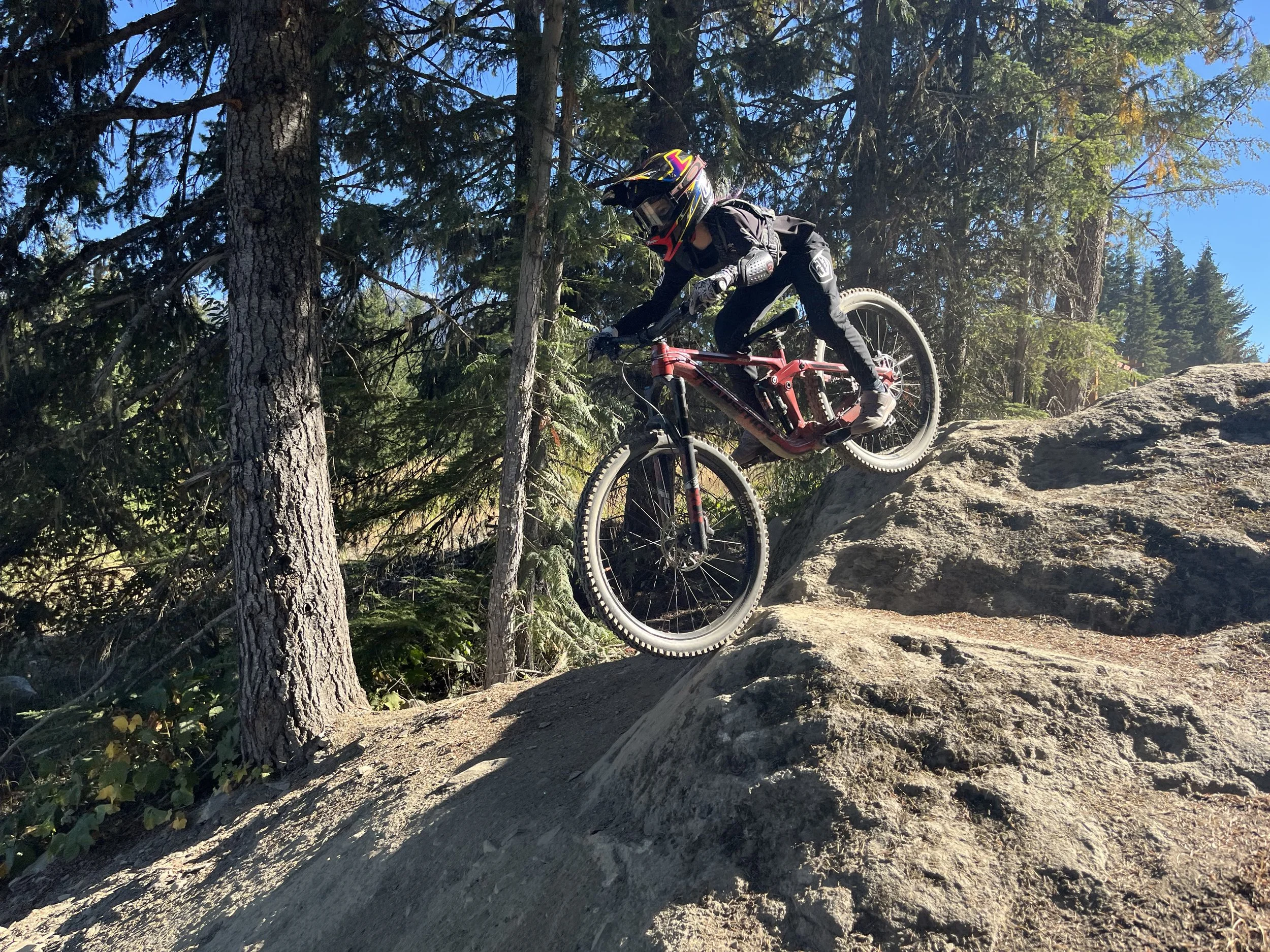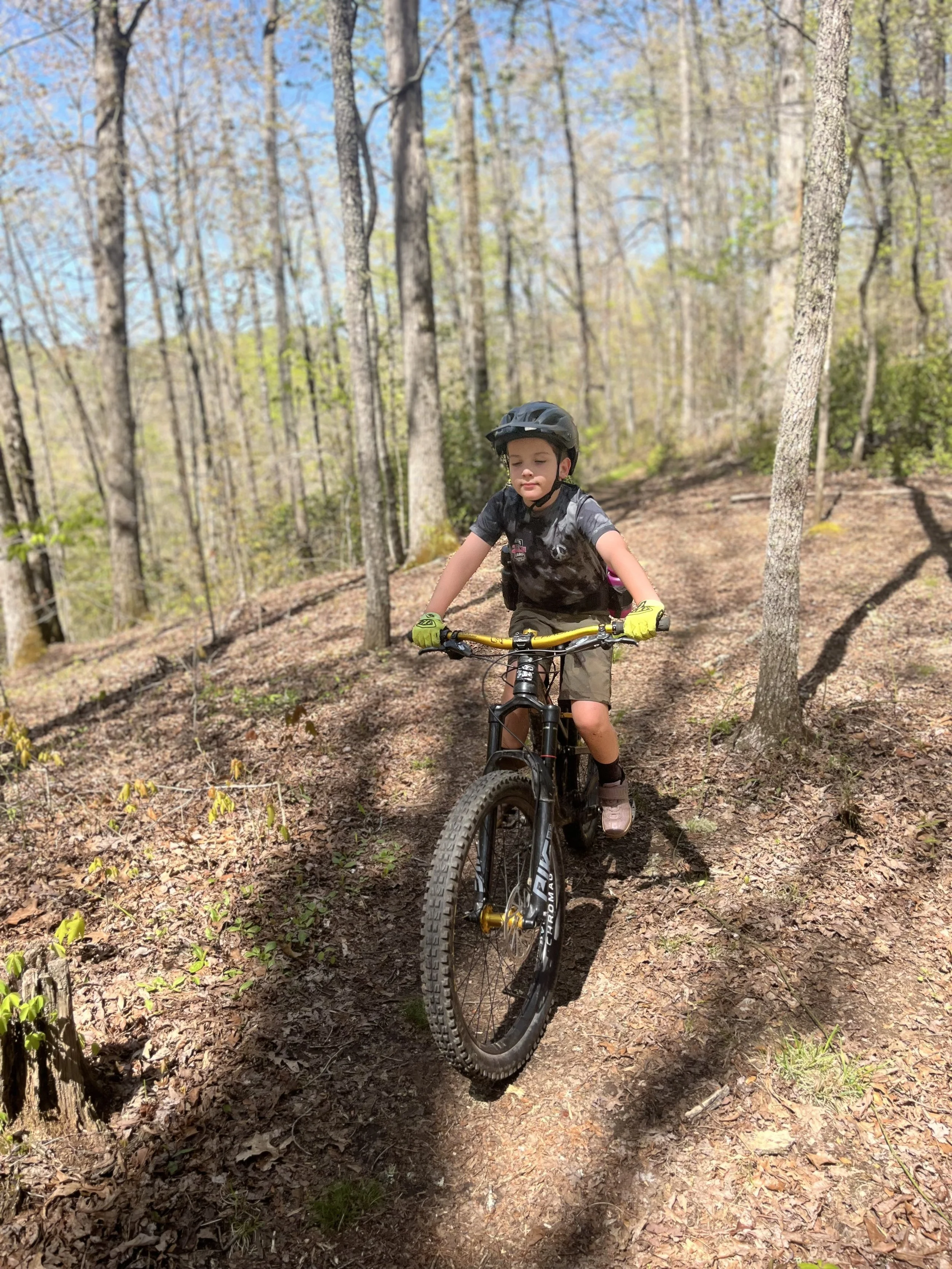How to Help Your Mountain Bike Students Choose the Right Size Bike
As a mountain bike coach, helping students pick the right size bike is a great way to improve their confidence, comfort and progression on the bike. This falls directly under GSMBC’s Equipment Skills Coaching Pillar—understanding bikes and helping riders get the right setup is essential for safe, confident, and effective riding. A properly sized and set-up bike improves safety, handling, and rider confidence, giving students the tools they need to focus on skills and enjoyment rather than struggling with poor fit.
Paul Howard, GSMBC’s Education Director, emphasizes:
“Teaching riders about bike fit and setup is one of the easiest ways to help our students’ mindset and feel more confident on the bike. When students understand their bike and feel confident on it, they progress faster and ride safer.”
This guide covers MTB sizing based on rider height, wheel size, and age, so you can guide your students with clarity and purpose.
Many Adults Can Fit Two Bike Sizes


Paul’s DH bike is a size X-Large with a wheelbase of 1332mm. His Enduro bike is a Large with a wheelbase of 1287mm
Bike sizing isn’t always exact—many adult riders can comfortably ride two different frame sizes. The best choice often depends on riding style, skill level, type of bike, and terrain.
Paul Howard explains:
“Bike sizing is about more than numbers. Many adult riders can fit two sizes, and the right choice depends on how and where they ride. For example, a rider who enjoys technical trails may benefit from a slightly shorter frame for maneuverability, while someone focusing on high-speed tracks or jumps might prefer the longer option. Helping students understand these nuances builds confidence and control.
For example, I’m 6’2” and can fit either a Large (L) or Extra Large (XL) Enduro bike. I choose a Large because the slightly shorter wheelbase makes the bike more maneuverable on tight, technical trails, while still being stable enough for high-speed sections or jumps in the bike park. An XL might be better if I primarily rode high-speed tracks or focused on jumps, but the L suits my mix of technical trail riding and occasional park use.”
Encourage students to think about how they ride and where they ride when deciding between two sizes. Comfort and confidence often matter more than the “perfect” number.
MTB Sizing Based on Rider Height
Here’s a practical guide for coaches using frame size, standard XS–XXL sizing, and wheel diameter:
| Rider Height | Frame Size (inches) | Frame Size (XS–XXL) | Wheel Size |
|---|---|---|---|
| 4'0"–4'6" | 12–14" | XS | 20–24" |
| 4'6"–5'0" | 14–16" | S | 24" or 26" |
| 5'0"–5'4" | 16–17" | M | 26" or 27.5" |
| 5'4"–5'8" | 17–18" | M/L | 27.5" or Mullet |
| 5'8"–6'0" | 18–19" | L | 27.5" or 29" |
| 6'0"–6'3" | 19–21" | XL | 29" |
| 6'3"+ | 21–23" | XXL | 29" |
BEWARE! Tables aren’t perfect for sizing as every human is different, with different lower/upper body ratios, arm length, femur length, etc - but they’re a good starting point!
Rider HeightFrame Size (inches)Frame Size (XS–XXL)Wheel Size4’0” – 4’6”12–14”XS20–24”4’6” – 5’0”14–16”S24”5’0” – 5’4”16–17”M26”5’4” – 5’8”17–18”M/L27.5”5’8” – 6’0”18–19”L27.5” or 29”6’0” – 6’3”19–21”XL29”6’3”+21–23”XXL29”
Bike Sizing for Kids… AND ADULTS!
Kids love riding bikes! Try to make the bike fit as well as you can, but just as important is to find good quality helmets and pads so they are comfortable and don’t injure themselves with every little bang, scrape or fall.
Kids’ bikes are typically sized by wheel diameter, while adult bikes also have a larger variety of frame sizes:
| Wheel Size | Recommended Riders |
|---|---|
| 24-inch | Ideal for children 8–12 years old |
| 26-inch | Suitable for teens or smaller adults, around 4’6” – 5’2” |
| 27.5-inch / 27.5–29" Mullet | Great for riders 5’2” – 6’0” |
| 29-inch | Recommended for riders 5’6” and taller |
Paul Howard advises:
“Always encourage kids to test-ride bikes whenever possible. A bike that fits well builds confidence and helps them focus on learning skills rather than struggling with an uncomfortable ride.”
The reality is that kids can grow quickly, and kids’ bike sizes don’t progress in perfectly small increments. This often results in a big jump between bike sizes. Plus, parents often don’t have bottomless budgets, meaning kids may ride bikes that are occasionally too small or too big.
As a coach, there are ways to help bridge the gap and make a bike fit more comfortably:
Move the seat forward on the rails.
Lower the stem or add a shorter stem.
Cut down the handlebars if they’re too wide.
Roll the handlebars back slightly.
Adjust the reach of the brake levers.
Each of these adjustments can help a bike feel smaller, while doing the opposite can make it feel larger. These small changes can make a big difference in a child’s confidence, control, and overall riding enjoyment.
How to Check Fit for YOU & Your Students
This article is mostly focusing on bike sizing… however, here’s some basic tips to start with bike fit. We’ll be covering more detailed articles in bike fit and set up in future articles.
Traditional Standover Height: For hardtail bikes with a straight top tube, aim for 1–2 inches of clearance between the crotch and the top tube. For full-suspension bikes, standover height can vary widely, so use an “imaginary” top tube—from the top of the head tube to the top of the seat tube—as a reference. While helpful, this doesn’t always paint the correct picture for what you or your riders are looking for from bike fit… so let’s dig in further…
Length - Wheelbase: Traditionally, bike fit has been focused around the standover height. However, it’s important to consider the length of the bike just as much, if not more so, than the height. Why? Because this typically has a larger impact on how the bike will feel and ride, once the rider is riding! With this in mind, bikes can be considered a little bit like a snowboard, surfboard, or ski’s… in that an adult can often fit more than one bike because. the standover heights don’t vary much between one size to the next, assuming the wheels are the same size.
NEUTRAL POSITION: Rider’s standing in a tall, relaxed Neutral Position should feel comfortable with most of their weight in their feet, while having their chin over the stem with a little weight in their hands, and a small bend in the waist.
If it’s difficult to stand tall (the rider is hunched over the bars) and/or there’s a lot of weight in the hands, this can be a sign of a bike that is too long
If the rider is easily pushed back over the rear wheel and they feel ‘cramped’ between the bars and the pedals, this can be sign the bike is too short
Bike Fit: Beyond Pedalling Position
A well-fitted mountain bike is not solely determined by the pedalling position; rather, it encompasses the overall riding experience, particularly when standing up. Traditional bike fit classes often draw heavily from road cycling, resulting in a focus solely on the pedalling position.
Mountain bikers spend a significant amount of time controlling and manipulating the bike while standing up, coasting. Consequently, the fit and ride qualities, such as ease of lifting the front wheel, applying pressure, shifting between wheels, turning, steering, and maintaining stability and balance, are influenced by various factors, including chain stay length, wheelbase, and the distance between the bottom bracket and handlebars.
Seat Height: Knee should bend slightly at full pedal extension, with the ball of the foot over the axle of the pedal. However, for nervous or new riders, lower the seat a little - about an inch - can help improve comfort, control and confidence, without significantly compromising pedalling efficiency or power. Remember - a confident rider is more important than optimal pedalling efficiency for many beginners to low-intermediates!
Reach/Seat Position & Angle: Sliding the seat forwards or backwards can really help find a position that is neither too cramped (feeling heavy or ‘pushed’ onto the bars) or too stretched (straining to reach or control the bars comfortably). Similarly, many riders can improve climbing and pedalling comfort by lowering the nose of the seat a little, to help prevent the hips from sliding back on steeper gradients.
Consider Suspension: Make sure the sag and rebound are set up to allow for a comfortable and balanced ride quality. Bikes with not enough sag can feel harsh and sometimes a little too big. Likewise, bikes with too much sag (suspension is too soft), can feel unstable and a little small.
Test Ride: Whenever possible, take them to a shop or demo centre and let students ride multiple sizes to find the best fit.
Paul Howard notes:
“Even small adjustments in seat height or handlebar reach can make a big difference in comfort and confidence. Teaching students these nuances is a key part of the Equipment Pillar.”
How do I measure my inseam for mountain bike sizing?
Your inseam is the distance from the floor to your crotch, and measuring it is one of the most accurate ways to choose the right mountain bike frame size.
To measure inseam at home, stand barefoot against a wall with feet shoulder-width apart. Place a book or a level firmly between your legs, simulating saddle contact. Mark the top of the book against the wall, then measure from the floor to that point. This number is your inseam length.
Once you have the measurement, multiply it by 0.66 to estimate your ideal frame size in centimetres. For example, an inseam of 80 cm × 0.66 ≈ 52 cm frame. Inseam sizing is particularly valuable if your height falls between two frame sizes — it gives a clearer picture of whether you should size up or down. Coaches can use this method to demonstrate to students why inseam often matters more than height alone.
What is the difference between 27.5 and 29-inch mountain bikes?
27.5-inch bikes are more agile and playful, while 29-inch bikes roll faster, climb efficiently, and suit taller riders.
A 27.5-inch bike is a good choice for riders who prefer quick handling, fast acceleration, and playful riding on tight trails. These wheels are often recommended for smaller riders or anyone who values maneuverability over straight-line speed.
A 29-inch bike, sometimes called a “29er,” is designed for speed and stability. The larger wheels roll over rocks, roots, and obstacles more smoothly, making them ideal for taller riders and for long climbs or descents.
There is also the mullet setup: a 29-inch wheel in the front for stability and rollover ability, paired with a 27.5-inch wheel in the rear for agility. This combination has become popular in enduro and downhill racing because it balances control with playfulness.
What happens if my mountain bike is the wrong size?
Riding the wrong-size bike can cause pain, reduce control, and increase your risk of injury.
A bike that is too small often feels cramped, with your knees coming too close to the handlebars. Riders on undersized bikes may suffer from knee pain, back discomfort, and poor climbing efficiency. Small frames can also limit stability on descents.
A bike that is too large can feel stretched out, forcing you to overreach for the handlebars. Oversized bikes are harder to maneuver on technical trails and can cause shoulder, neck, and lower back strain.
If you’re between two sizes, the general advice is:
Size down for agility, jumps, and technical trails.
Size up for stability, long-distance rides, and descending control.
For coaches, teaching students how to recognize these signs early can prevent injuries and improve riding confidence.
Does bike sizing change for XC, Enduro, and Downhill?
Different mountain biking disciplines require different frame dimensions (lengths) and geometry (angles) to optimize the bike for its intended terrain and use. For example, downhill bikes are much longer than cross-country bikes. However, a rider who fits a medium downhill bike will often also fit a medium cross-country bike. Even though the cross-country frame is “smaller,” its dimensions are designed for the same rider height, taking into account the different terrain and riding style.
On the other hand, if the same rider who was comfortable on a medium cross country bike tried to use a downhill bike with the same wheelbase (length) as the medium cross-country bike, it would likely feel too small and unstable at speed.
Cross-country (XC) frames tend to be slightly shorter with steeper geometry for faster acceleration, climbing efficiency, and sharp handling on tight trails.
Enduro frames tend to be longer and slacker to increase stability on steep descents and high-speed sections, where control and confidence are critical.
Trail bikes, which are versatile all-rounders, tend to fit somewhere between XC and Enduro frames to get the best of both worlds.
Downhill (DH) frames are the longest, slackest and heaviest design, as a longer wheelbase provides extra stability at speed and over jumps. While this sacrifices some maneuverability, the tradeoff is worth it for greater strength, control and stability at higher speeds, rougher terrain and steeper gradients.
Understanding these subtle differences helps both riders and coaches recommend the best bike size not only for body dimensions, but also for intended riding discipline.
What do popular brands recommend for MTB sizing?
Most major brands publish their own size charts, which align with industry standards but differ slightly in geometry and labelling.
Trek recommends using both height and inseam, with many of their adult models moving riders 5’6” and taller toward 29-inch wheels.
Giant labels frames XS–XL and gives detailed inseam ranges for each size, which helps riders between heights decide confidently.
Specialized provides men’s and women’s MTB size guides. Women-specific models often have slightly shorter reach and narrower handlebars, but frame sizing is otherwise the same.
Santa Cruz and Canyon feature online sizing calculators, where riders input their height and inseam to get tailored recommendations for specific models.
Including references to these brand standards reinforces GSMBC’s authority by showing alignment with industry best practices. Coaches can use these charts as teaching tools to cross-check sizing decisions.
Teaching Tips for Coaches
Start with the student’s height and age, then adjust based on comfort, skill level, and terrain.
Explain why correct bike size improves safety, handling, and confidence.
Show how small adjustments in setup can significantly improve control.
Help students understand that choosing between two sizes is normal for adult bikes.
Keep up to date with GSMBC’s coaching workshops to learn the latest best practices in rider fit and safety.
WRAP UP
Helping your students choose the right bike size is a core Equipment skill for any coach. By understanding frame size, wheel diameter, and proper fit—and by recognizing that many adult bikes fit two sizes—you can directly improve your students’ confidence, control, and enjoyment on the trails.
Paul Howard sums it up:
“Educating riders about bike fit is one of the easiest ways to help our students’ mindset and feel more confident on the bike. Confidence starts with comfort and control.”
-
A rider who is 5’10” usually fits a size Large frame (18–19 inches) with 29-inch wheels.
-
A rider who is 5’4” typically fits a Medium frame (16–17 inches) with 27.5-inch wheels.
-
Most 10-year-olds fit a 24-inch wheel bike, depending on their height.
-
Size down for agility and jumps, size up for stability and control on descents.
-
If your knees hit the handlebars, your posture feels cramped, or you experience knee pain, the bike is too small.
-
If you’re overreaching to the bars or feel stretched out on climbs, the bike is too large.
-
No — while 29ers are best for riders over 5’6”, smaller riders can also benefit from them with adjusted geometry.
-
It combines a 29-inch front wheel with a 27.5-inch rear wheel, giving stability in the front and agility in the rear.
-
Not usually. Most brands now use unisex geometry, with women’s models only adjusting components like handlebars and saddles.
-
Yes, once they are tall enough for 13–15 inch frames and 26-inch wheels, but they should still test ride for comfort.
JOIN THE SYNDICATE & LEARN MORE!
Enhance your coaching skills and your students’ performance with GSMBC’s professional mountain bike coach educations courses, where the Equipment Pillar is a core focus. Check out the full course offerings here

